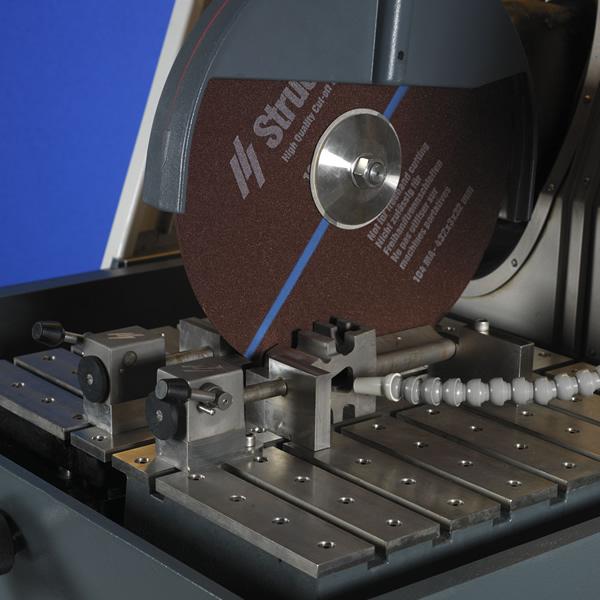EBSD Explained
Techniques
Applications
Hints and Tips
Technology
OXFORD INSTRUMENTS EBSD PRODUCTS
CMOS Detector RangeAZtecHKL Acquisition SoftwareAZtecCrystal Processing Software
The first thing to remember when cutting samples for Electron Backscatter Diffraction (EBSD), is to preserve the orientation of relevant axes in the original sample/material. Cut the sample in such a manner that important sample directions, such as the Rolling Direction, the Transverse Direction and Sample Normal Direction are not lost. The second thing to remember that the cutting process must not damage or change the sample as this would lead to erroneous results.
Avoid aggressive cutting methods that generate heat or cause
deformation at the cut surface. Severe damage induced at this stage may
extend so deep into the material that it is not removed by subsequent
grinding and polishing.
Heating caused during cutting may cause changes to the microstructure - phase transformations, grain growth or precipitation/diffusions mechanisms may become active. Therefore unnecessary heating must be avoided at all costs.
Wet abrasive cutting machines are common in the metallurgical industry and are suited to cutting larger sections of material. The sample may be subjected to considerable force and heat if used incorrectly, good cuts can be performed with minimal damage however using excessive force with an inappropriate wheel can cause sample to overheat locally. Manufacturers of cutting equipment and cut-off wheels publish tables and diagrams to help to make the choice of wheel easier. The importance of observing the manufacturer’s recommendations cannot be over-stressed. If over-heating of the sample occurs, it is often due to using a wheel that is too ‘hard’ for the material being cut. The wheel does not wear properly which causes the abrasive to become blunt. Another possibility is that the abrasive becomes clogged. Friction then causes excessive heating and damage to the sample. These processes can result in altered surface structures, which subsequent grinding and polishing do not remove. EBSD is very sensitive to damage caused in this manner and greater care than usual is warranted to avoid generating misleading results or compromising data quality. Therefore, the selection of an appropriate cut-off wheel is important to avoid introducing unnecessary levels of damage when cutting materials.
There are many examples of wet abrasive cutting machines on the market designed for precision and low damage cutting. Such machines normally employ CBN (Cubic Boron Nitride) and diamond type cutting wheels, although abrasive cut-off wheels may also be available, depending on the machine. Generally, low deformation cutting machines are particularly well suited to cutting sections for EBSD.

Precision cutting machine designed for low damage and precision cutting

Precision cutting machine designed for low damage and precision cutting

Heat damage introduced to the sample surface during the cutting process

Sample cut without introducing heat damage
Images courtesy of Struers.